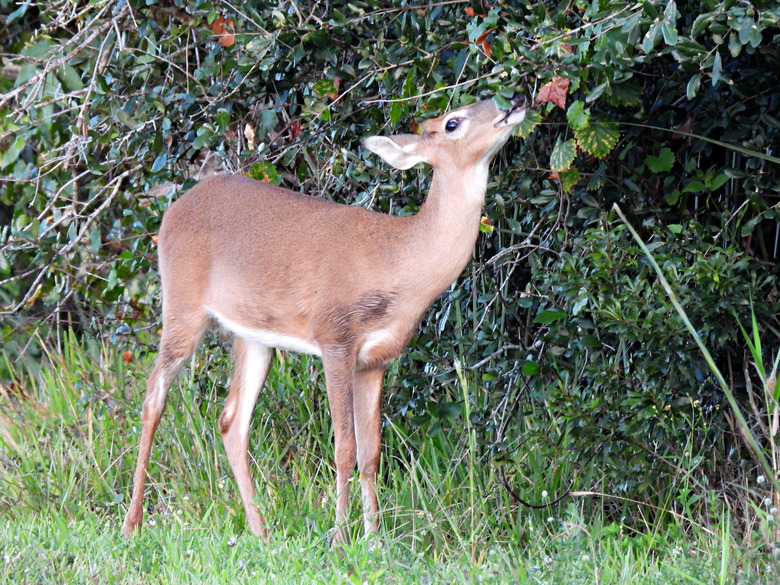Deer-Resistant Arborvitae
We may receive a commission on purchases made from links.
Arborvitae (Thuja spp.) is an evergreen tree or shrub that is extremely popular for hedges or windbreaks. You'll find species and cultivars in many shapes and sizes to fit the needs of small gardens and large. Arborvitae is prized by gardeners as a hardy evergreen, but is also a favorite food source for deer.
'Deer Resistant' Is No Guarantee
'Deer Resistant' Is No Guarantee
Let's just put the bad news out there up front: No plant that is edible is deer-proof. That's not to say that deer don't have preferences. They would rather eat some plants than others, usually preferring sweet, tender greens to tough or bitter foliage.
And, in general, arborvitae is not on the preferred list for deer. Thuja shares a genetic connection with Western red cedar, a species practically inedible to deer. That connection gives arborvitae some protection. But don't count out the possibility of a starving deer in the middle of winter chowing down on your arborvitae.
Effects of Deer Grazing
Effects of Deer Grazing
When deer actually eat arborvitae, they usually go for the tender tips of branches where there is new growth. This can be extremely harmful to arborvitae since removing new growth stunts the plants' development for the entire growing season.
If deer eat only the tips of an arborvitae branch, the foliage will likely grow back the next year. However, if they strip it bare, the branch will probably never regrow. Once deer know that food is to be found in your yard, they are likely to return and munch on the same plants or anything else available.
"Deer-Resistant" Arborvitae
"Deer-Resistant" Arborvitae
The majority of arborvitae varieties make no claims about being "deer-resistant." However, a few of these evergreens have emerged through breeding and experimentation that seem to fare well against deer.
These include Green Giant (Thuja standishii x plicata 'Green Giant'), a large, vigorous evergreen that is said to shoot up by a yard a year from planting through maturity. Green Giant is appropriately named since it tops out at around 60 feet in height, with a 12- to 20-foot spread. Its natural form is attractive and dense, with rich green foliage that darkens slightly in the winter.
American arborvitae (Thuja occidentalis) is another deer-resistant option in USDA zones 2a to 7a. It grows about as tall as Green Giant, although it has less of a spread at 10 to 15 feet.
Deer Prevention Practices
Deer Prevention Practices
To protect your arborvitae from deer, consider commercially available preventive measures. Fencing, netting, and cages for young plants are the simplest methods of prevention if you don't mind the way they look.
If you want to fully protect your garden and landscaping, or if you live in an area with a high deer population, you will do best installing a tall fence.
